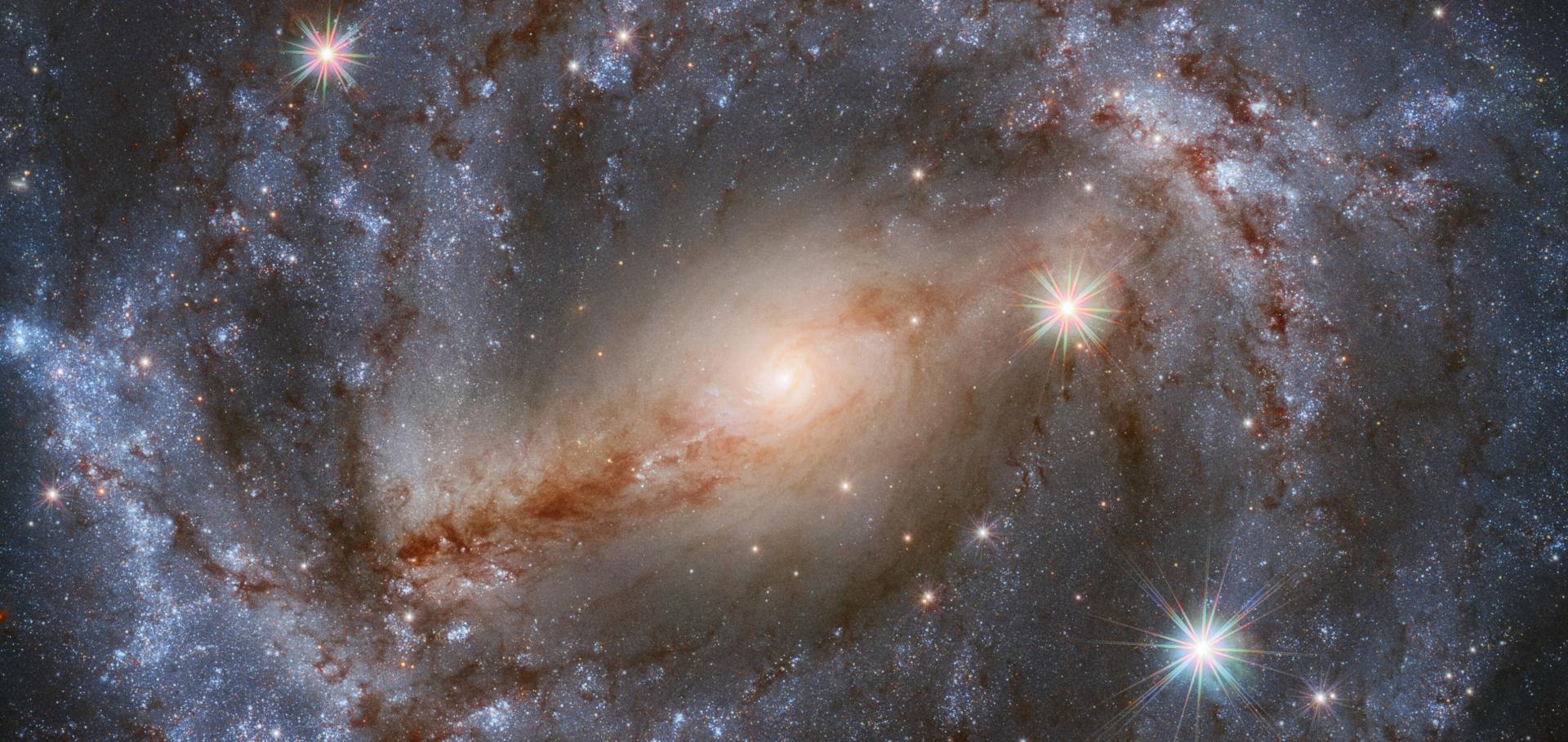Absence of nuclear polycyclic aromatic hydrocarbon emission from a compact starburst: The case of the type-2 quasar Mrk 477
Astronomy & Astrophysics EDP Sciences 669 (2023) l5
Torus and polar dust dependence on active galactic nucleus properties
Astronomy & Astrophysics EDP Sciences 667 (2022) a140
A high angular resolution view of the PAH emission in Seyfert galaxies using JWST/MRS data
Astronomy & Astrophysics EDP Sciences 666 (2022) l5
A high angular resolution view of the PAH emission in Seyfert galaxies using JWST/MRS data
Astronomy & Astrophysics Letter 666:L5 (2022) 12 pages
Abstract:
Low-power jet-interstellar medium interaction in NGC 7319 revealed by JWST/MIRI MRS
Astronomy & Astrophysics 665:L11 (2022) 10 pp.
Abstract:
We present JWST/MIRI MRS spectroscopy of NGC 7319, the largest galaxy in the Stephan's Quintet, observed as part of the Early Release Observations (ERO). NGC 7319 hosts a type 2 active galactic nucleus (AGN) and a low-power radio jet (L1.4 GHz = 3.3 × 1022 W Hz−1) with two asymmetric radio hotspots at 430 pc (N2) and 1.5 kpc (S2) projected distances from the unresolved radio core. The MRS data suggest that the molecular material in the disk of the galaxy decelerates the jet and causes this length asymmetry. We find enhanced emission from warm and hot H2 (Tw = 330 ± 40 K, Th = 900 ± 60 K) and ionized gas at the intersection between the jet axis and dust lanes in the disk. This emission is coincident with the radio hotspot N2, the hotspot closer to the core, suggesting that the jet-interstellar medium (ISM) interaction decelerates the jet. Conversely, the mid-infrared emission at the more distant hotspot is fainter, more highly ionized, and with lower H2 excitation, suggesting a more diffuse atomic environment where the jet can progress to farther distances. At the N2 radio hotspot, the ionized gas mass (Mion = (2.4-12)×105 M⊙) is comparable to that of the warm H2, but the former is more turbulent (σion ∼ 300 vs. σH2 ∼ 150 km s−1), so the mechanical energy of the ionized gas is ∼1.3-10 times higher. From these estimates, we find that only < 1% of the jet energy remains as mechanical energy in these two ISM phases at N2. We also find extended (r > 0.3-1.5 kpc) high-ionization emission ([Mg V], [Ne VI], and [Ne V]) close to the radio hotspots. This initial analysis of NGC 7319 shows the potential of MIRI/MRS to investigate the AGN feedback mechanisms due to radio jets and their radiation field in the, often heavily dust-enshrouded, central regions of galaxies. Understanding these mechanisms is an essential ingredient in the development of cosmological simulations of galaxy evolution.


